Worst Climate Case
Rather than affecting total resources as in the LSC Projected Case, self-sustained climate change adds its own ecological footprint to the one imposed directly by humans.
While people still aim for the limits predicted by their own global footprint and the historical resource limit derived in the LSC Projected Case (3 Earths/year), their population and footprint are actually limited by the combined global footprint (human plus climate).
The result is summarized below for the basic global variables. Note that Environments is happy environments (happiness times population), and that years on the graph are marked at mid-year.
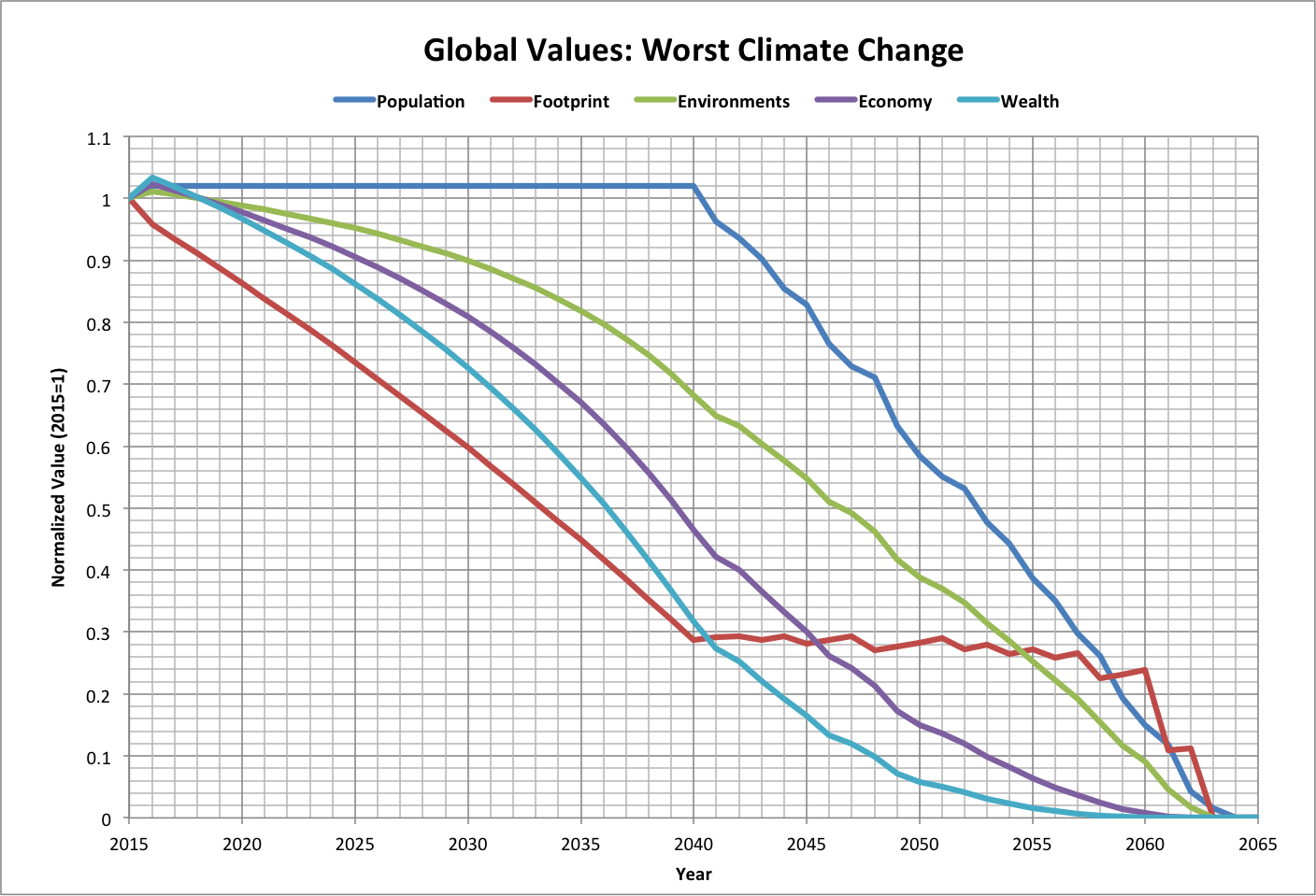
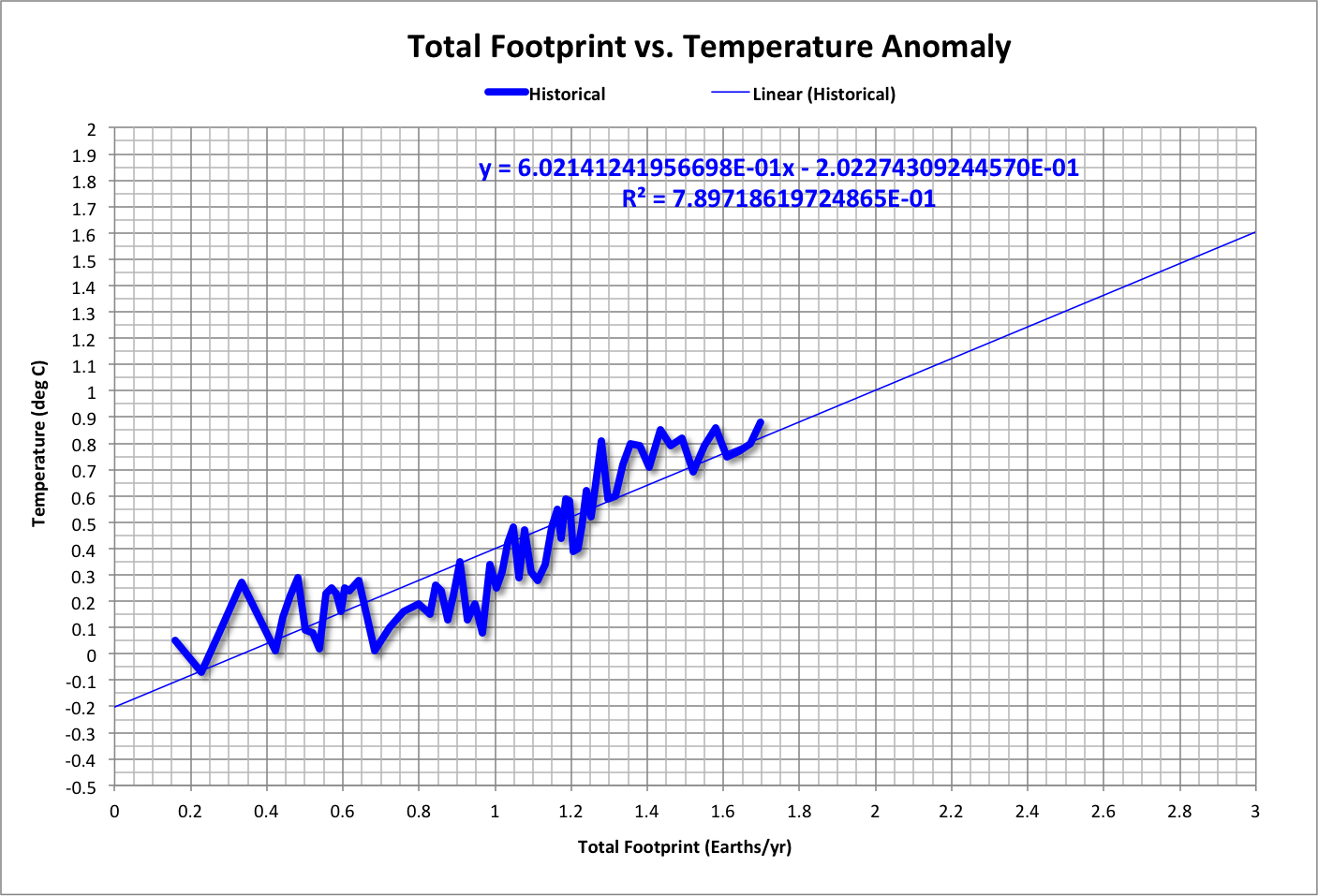
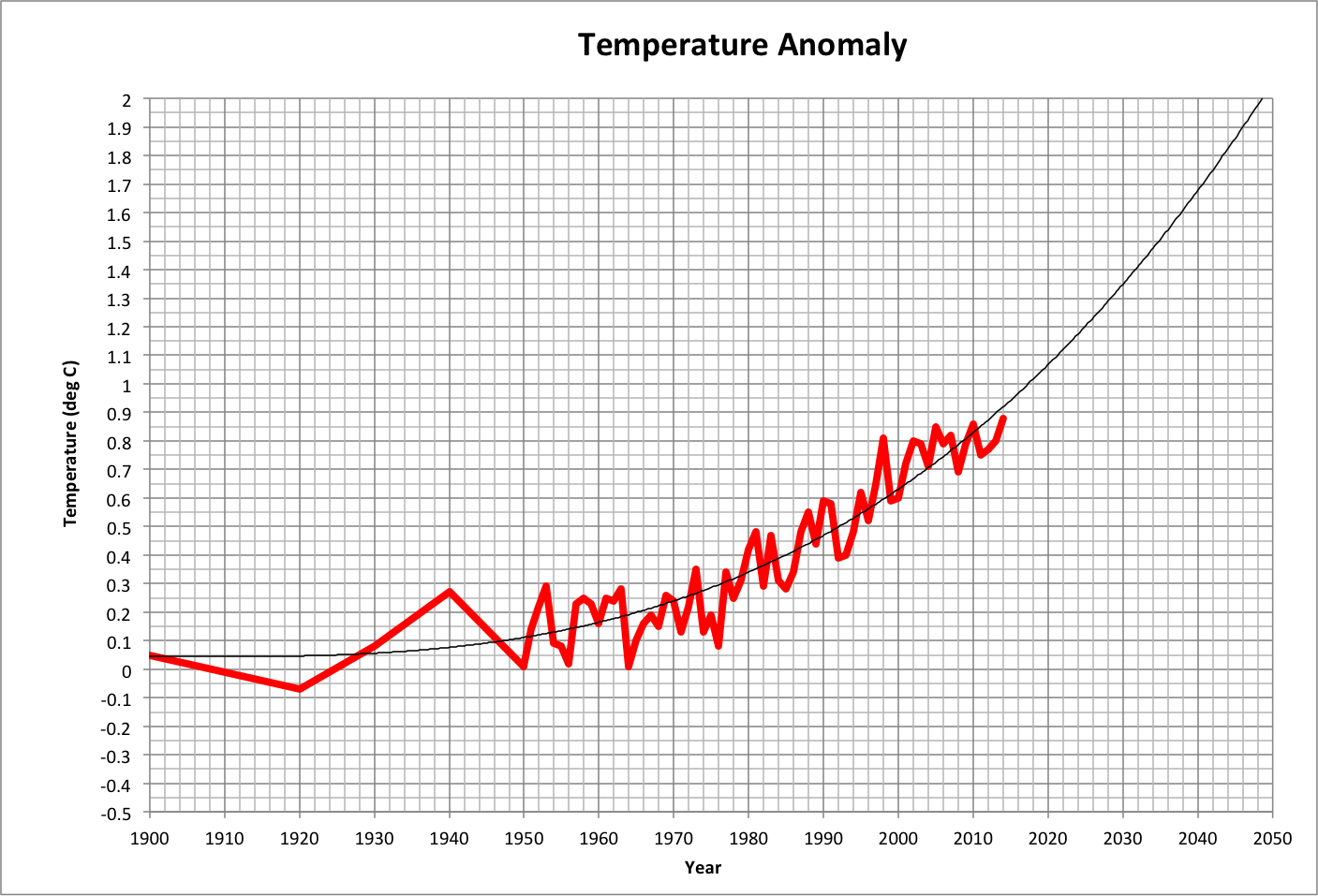
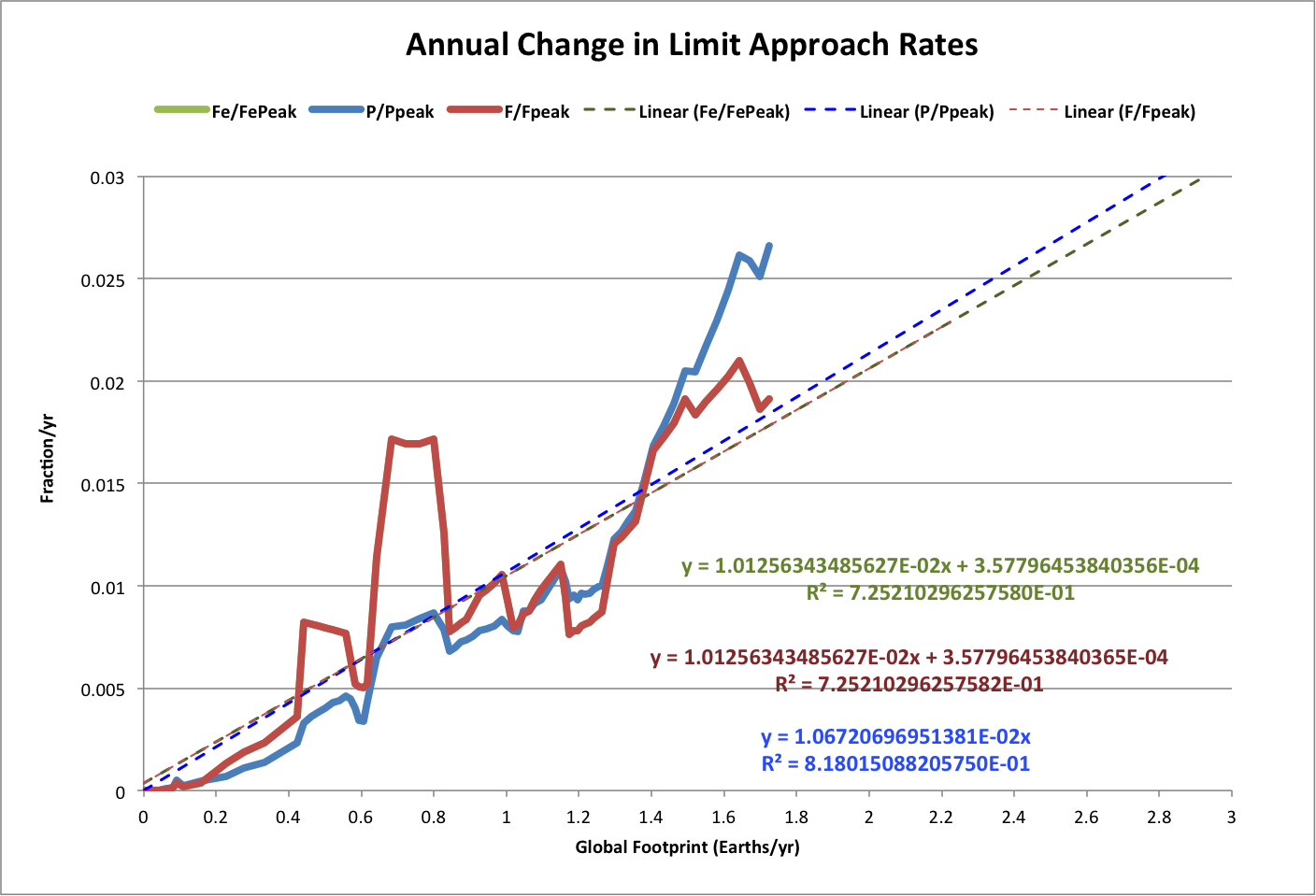
Note that all approach rates [(Value / Peak Value) / time] are estimated to be 0.01 * Fe in the projections, where Fe is humanity's global footprint.
Peak population for the worst case climate is shown below (Climate Peak), and the calculated projection using approach rates is shown as Climate Sim.
For reference, the population peak for the LSC Projected Case is shown along with the peak population with the minimum footprint for a functioning civilization (Civilization Peak) where temperature affects resources as in the LSC Projected Case. Note that the footprint for a functioning civilization (1.74 times the minimum footprint) is 53% of the footprint in 2015.
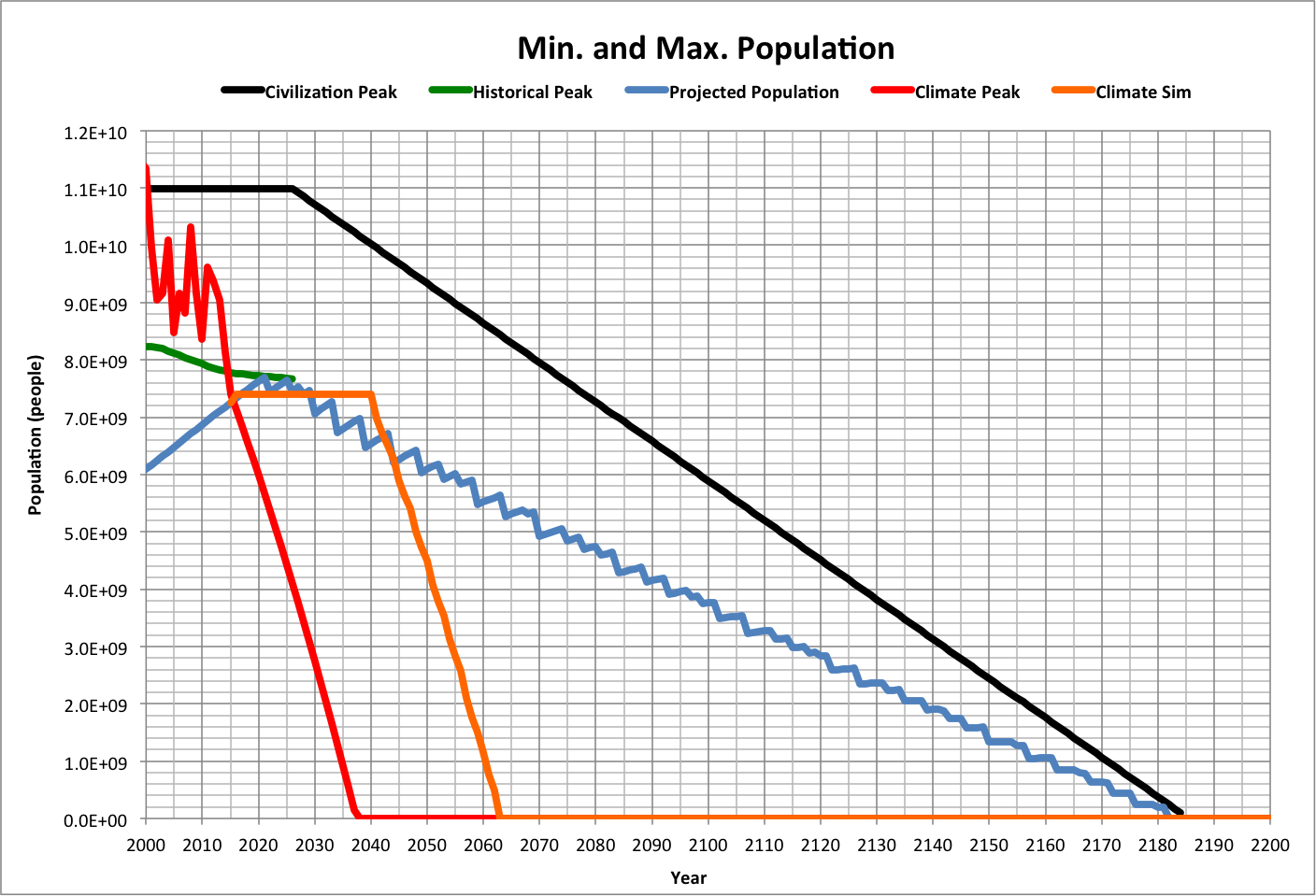
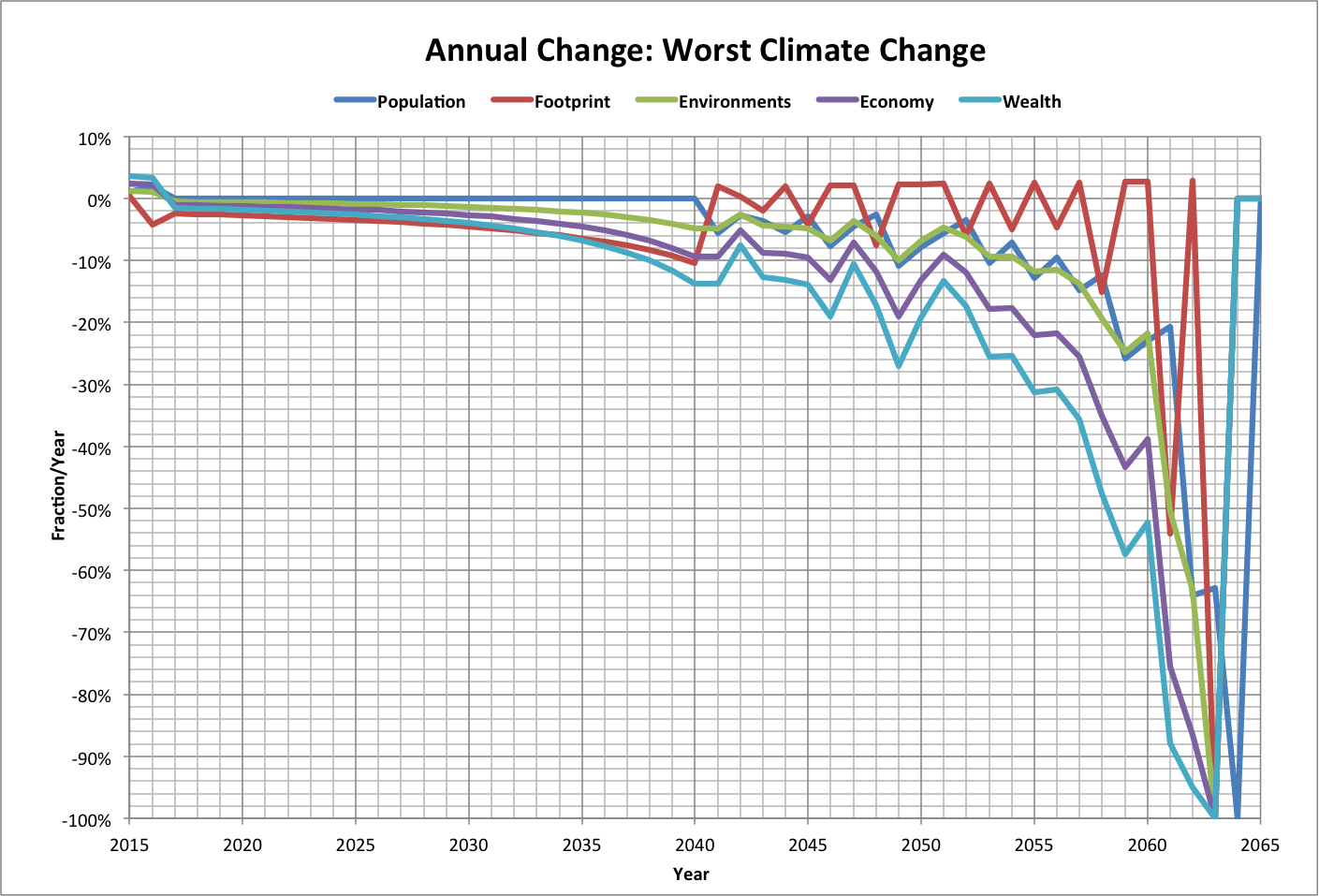
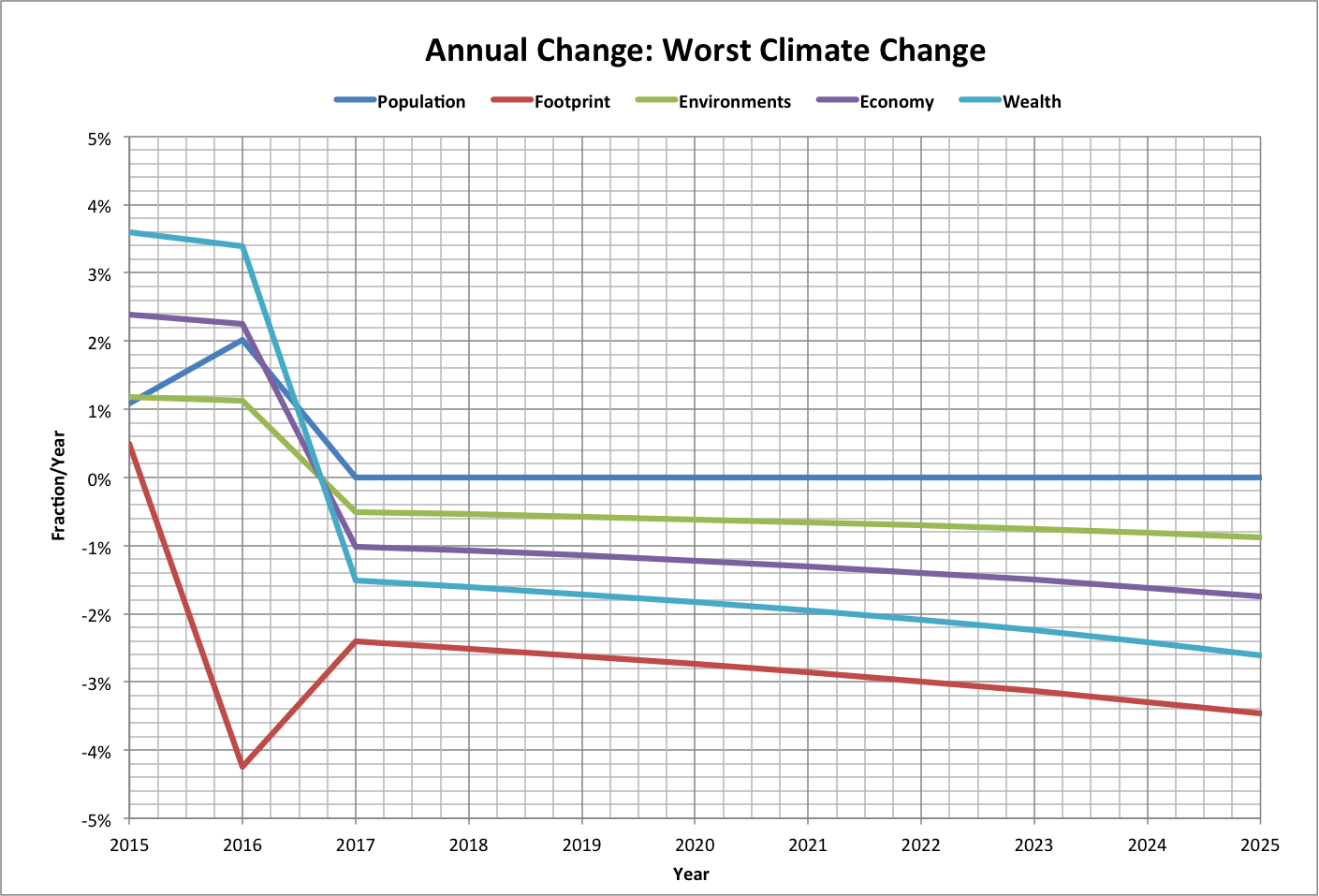
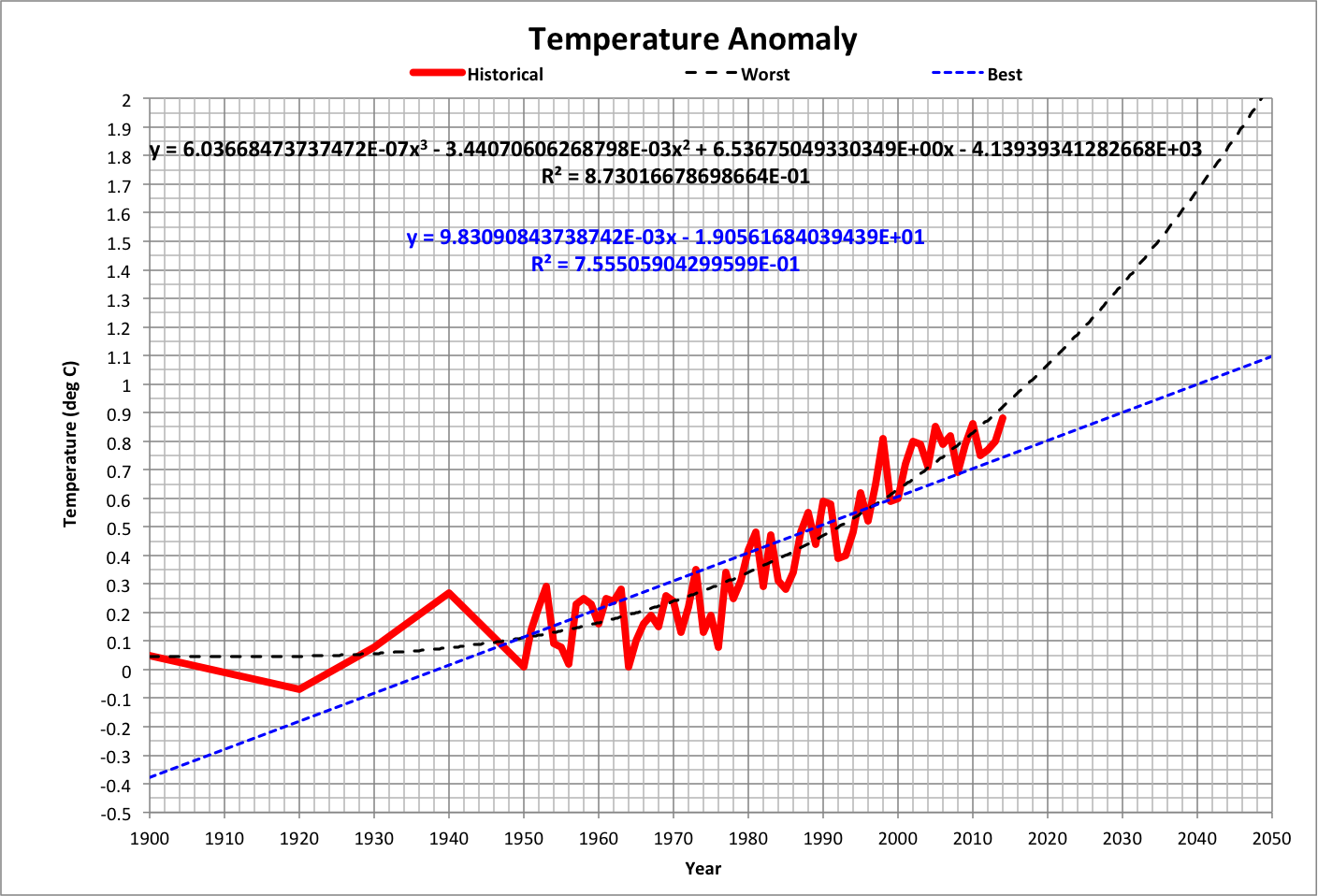
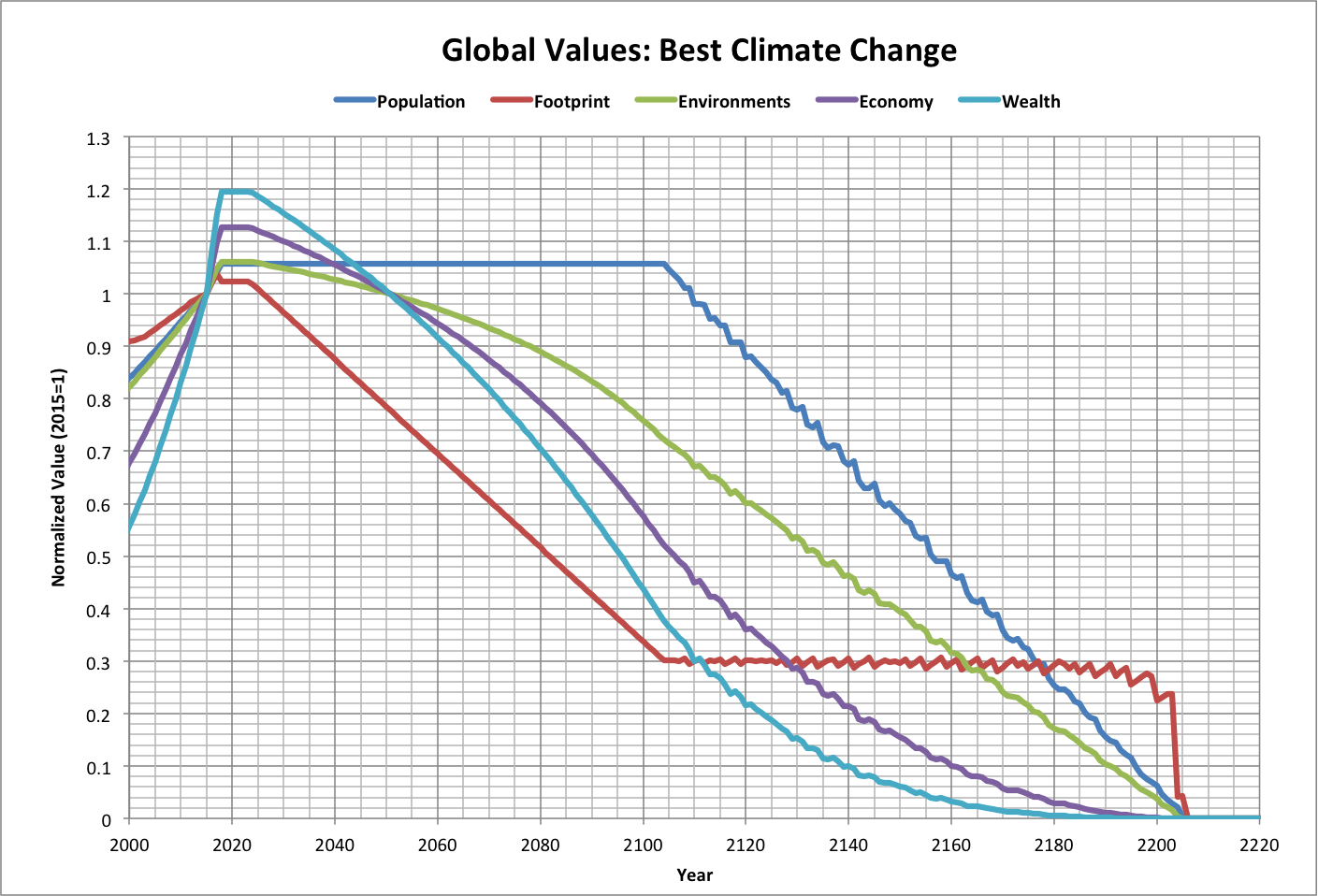
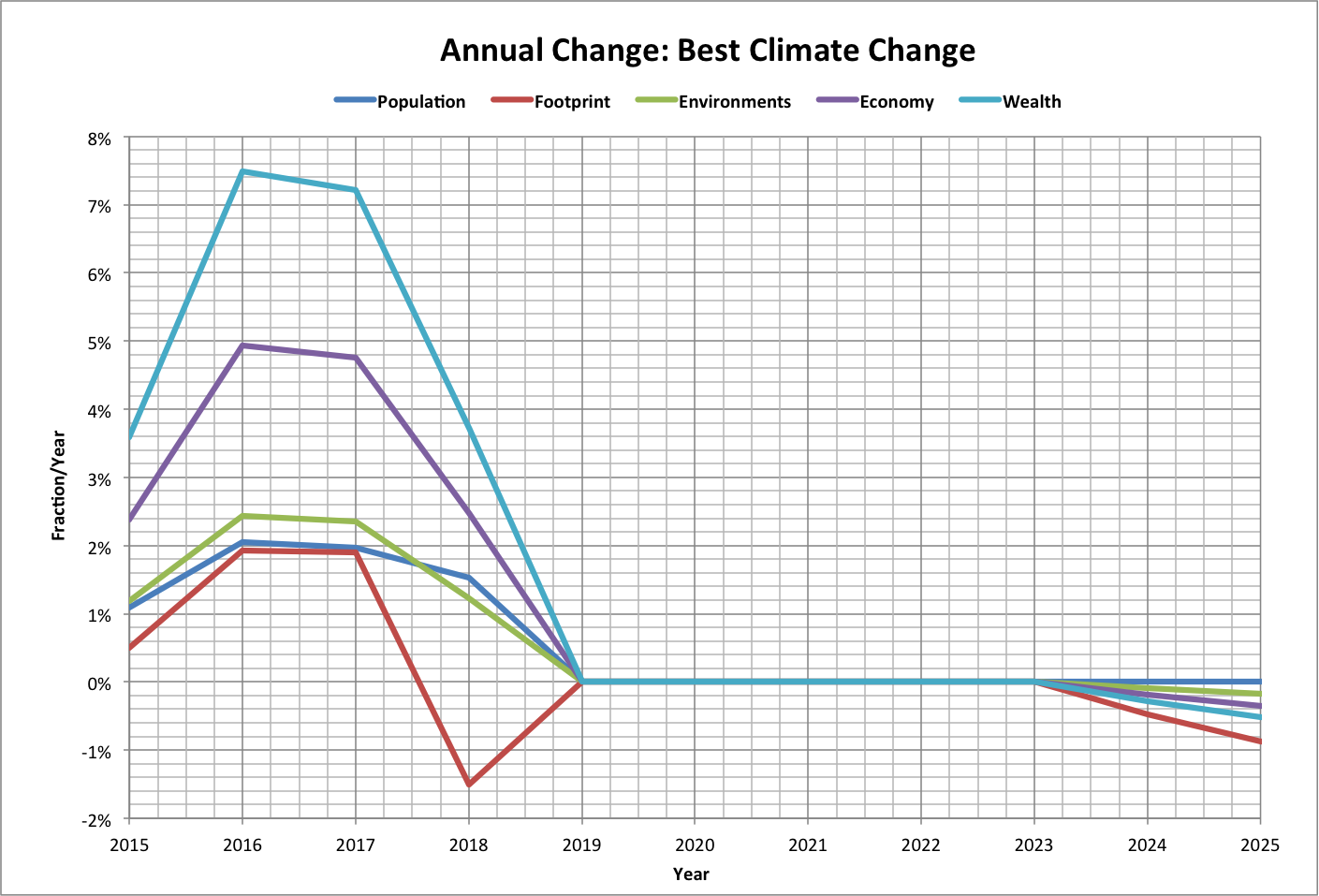
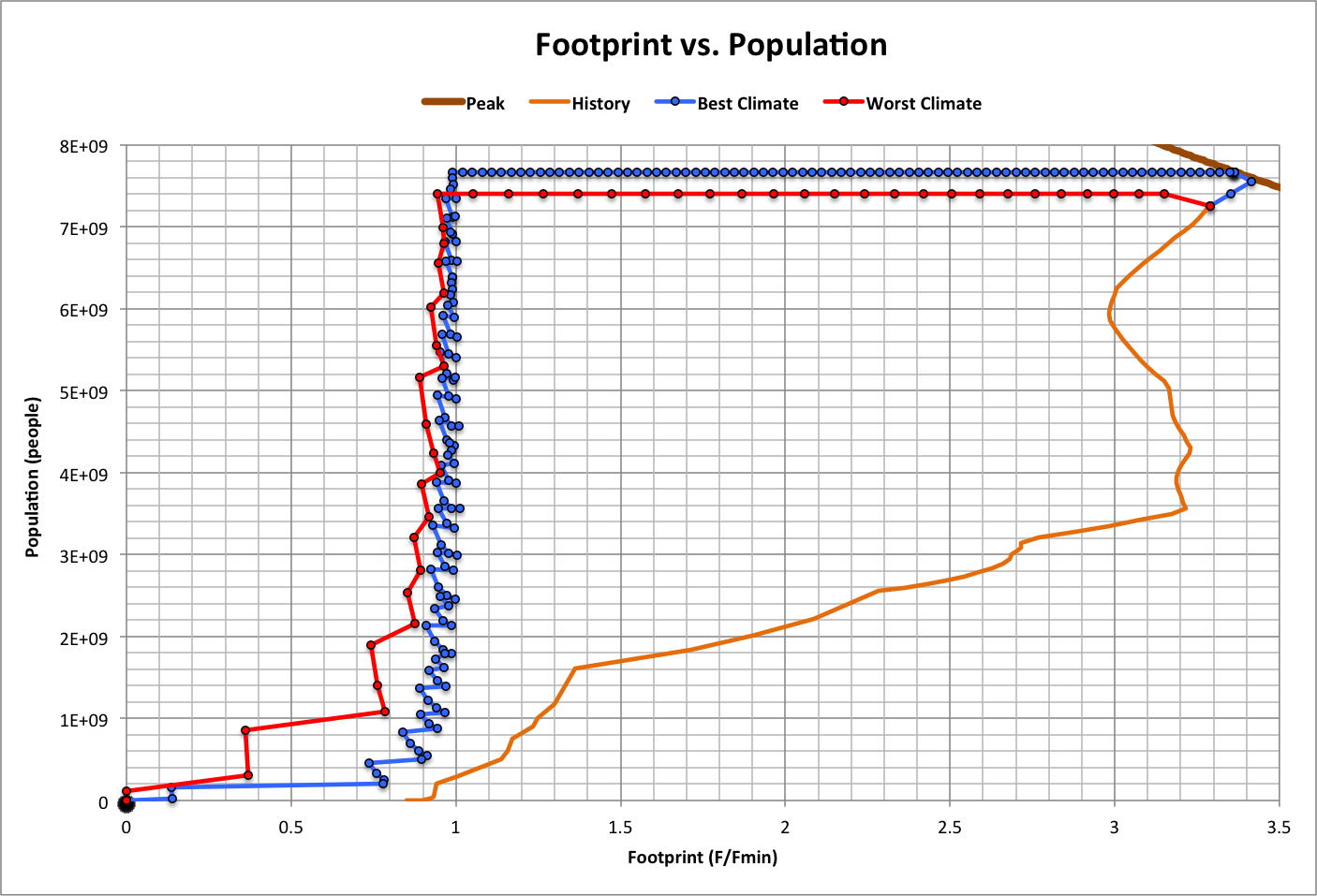
See also: